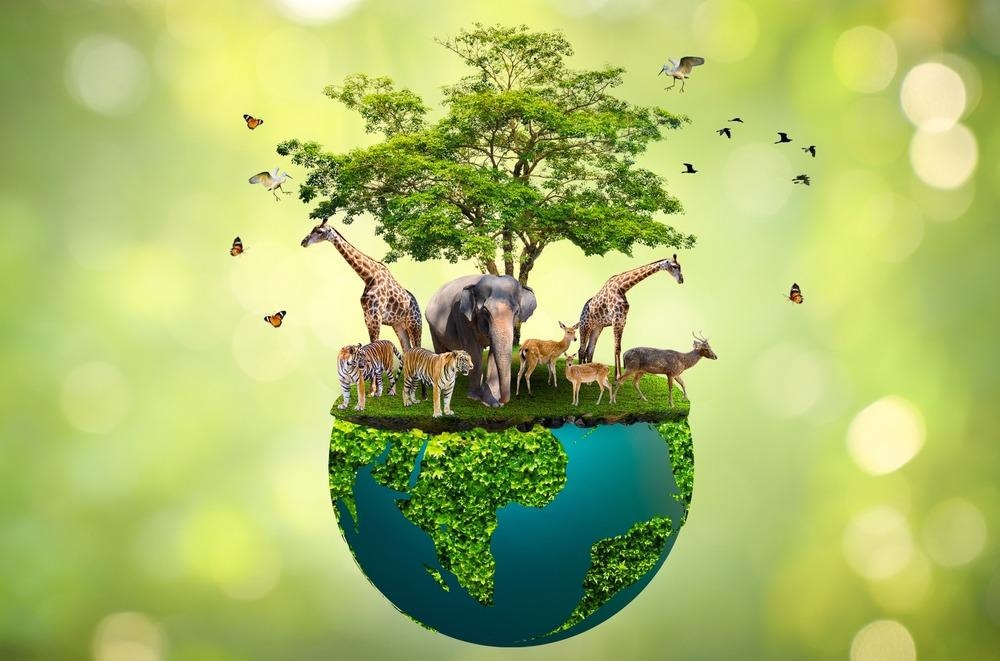The natural assets of the Earth include plants, animals, water, land, the atmosphere, and humans. In the last four decades, the world has lost an overwhelming number of species due to human misconduct, such as deforestation, overpopulation, climate change, animal exploitation, and consumer culture.

Image Credit: sarayut_sy/Shutterstock.com
Experts have stated that the world is losing species in the range of 1,000 to 10,000 times higher than the natural extinction rate. It is important to maintain biodiversity because the health of the planet depends on it. Wildlife conservation involves protecting endangered plant and animal species and this is critical for a sustainable future.
What is Wildlife Conservation?
The continual rapid growth of the world population implies that natural resources would be consumed faster. This growth displaces particularly animals and plants for land development or agriculture. Scientists have indicated that sustainable use of wildlife will provide long-term stability to the global population.
Wildlife conservation is a practice of safeguarding animals and plants species and their habitat from extinction. As a part of the ecosystem, wildlife provides stability to natural processes. Besides protecting wildlife and plant species, another objective of wildlife conservation is educating people to live sustainably with other species.
Many national and international organizations, such as Conservation International, the Wildlife Conservation Society, World Wildlife Fund, and the United Nations, have been supporting global wildlife and habitat conservation. They collaborate with governments to develop national parks and wildlife refuges. These organizations promote biodiversity to support the human population while protecting the existing species.
Loss of Biodiversity- A Threat to Humanity
According to World Economic Forum’s 2020 Global Risk Report, loss of biodiversity, which could collapse the ecosystem, is one of the top five threats humanity will face in the next ten years. Since ancient times, human society and economies have been dependent on biodiversity. Countless flora and fauna have been utilized by humans, across the world, in their daily lives for food, furniture, housing, etc.
Convention on International Trade in Endangered Species (CITES) has been one of the foremost institutions for wildlife conservation through the regulation of international trade. They have developed a framework that has regulated the use of wildlife and their habitats and, thereby, supported both conservation and human well-being.
These international communities have integrated wildlife conservation with sustainable development. This is an important step to protect the remaining animal species on Earth. Rapid urbanization and other such developments have affected the wildlife and other objects of nature, tremendously. For instance, whale sharks are rapidly declining due to fishing and illegal poaching, and many species of vultures are on the verge of extinction.
CITES has focused on conserving African carnivores, such as the African lion, the cheetah, the leopard, and the African wild dog. Scientists, governments, private sectors, and many other organizations have come together and have focused on protecting animal and plant species from extinction.
Can We Link Wildlife Conservation with Sustainable Future?
Interestingly, scientists have linked wildlife conservation with a sustainable future. They further connected this concept with the eradication of poverty and hunger and improvement of the overall health of the planet and humans. Many organizations, such as CITES, have brought governments together to build a global biodiversity framework, which has strengthened conservation efforts.
Many examples show wildlife conservation has provided sustainability. The CITES Convention in 1975, prohibited the international trade of vicuña (Lama vicugna), an animal species endemic to the highlands of the South American Andes and which was exploited to near extinction for the high-quality fiber of wool. Subsequently, national vicuña populations recovered and several sub-species have been allowed for the resumption of a regulated trade.
Since 2007, the Government of Bolivia has implemented a vicuña fiber harvesting program, which rapidly developed into an industry that accounted for around 20 percent of the country’s exports. This program empowered local communities without endangering vicuñas. According to the International Union for Conservation of Nature (IUCN) Red List, this species has now been listed in the category of “Least Concern” for extinction. Similarly, controlled harvesting of seawater crocodiles by Aboriginal groups in Australia’s Northern Territories has proved to be economically as well as environmentally beneficial.
Top 5 Inspirational Animal Conservation Stories | BBC Earth
Importance of Global Frameworks to Conserve Wildlife
Taking into account the current biodiversity loss crisis, it is vital to promote the importance of conserving wildlife for a sustainable future. Research has shown that the implementation of a global framework for trade regulation, and government efforts to empower communities, has boosted the conservation of plants, animals, birds, and marine species. This shows controlled trade could be profitable without endangering a species to extinction.
Researchers have highlighted that the application of the CITES framework for the conservation of wildlife has been beneficial for both animal and plant species, and to the people who depend on them.
Another benefit of wildlife conservation has been food security. Protecting forestry from deforestation and rebuilding forest habitats to preserve biodiversity assists in the carbon-sequestering process. This process enables capturing and storing atmospheric carbon dioxide and, thereby, reducing the amount of carbon dioxide from the atmosphere.
Wildlife conservation also promotes agricultural biodiversity. Research has shown that a healthy ecosystem and biodiversity play a crucial role as a buffer between disease and humans. Several studies have also indicated that a decrease in biodiversity enhances the transmission of animal-borne diseases to humans.
Continue Reading: Solving the biodiversity crisis.
Sources:
- Sustainable Use of Wildlife. (2022) [Online] Available at: https://www.fishwildlife.org/application/files/9716/0271/2569/Science-Brief-Sustainable-Use-FINAL.pdf
- How Saving Wildlife Benefits Humans – In Ways We Really Need. (2021) [Online] Available at: www.onegreenplanet.org/.../
- How Wildlife Conservation Can Benefit Sustainable Human Development. (2020) [Online] Available at: www.un.org/.../global-framework-wildlife-conservation-can-benefit-sustainable-human-development
- Wildlife conservation, sustainable development in spotlight at UN-backed conference. (2017) [Online] Available at: www.un.org/.../
- Why You Should Care About Wildlife. (2004) [Online] Available at: https://www.worldbank.org/en/news/feature/2014/03/03/why-you-should-care-about-wildlife
Further Reading